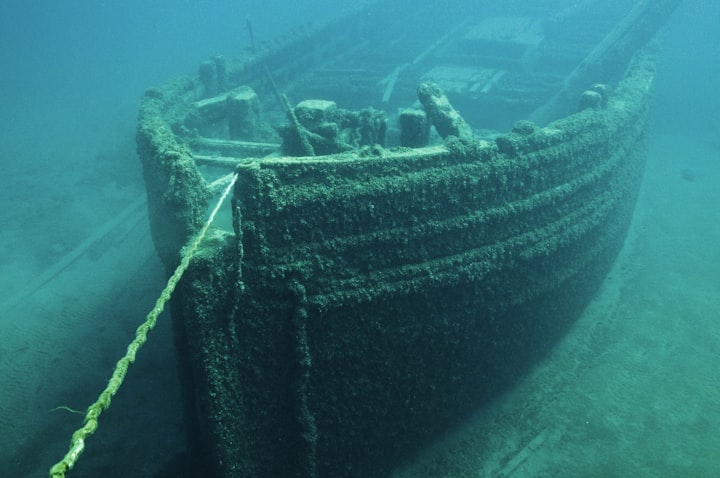The Enduring Legacy of the RMS Titanic: A Tale of Hubris, Tragedy, and Global Resonance
Introduction: The RMS Titanic, a name etched in the annals of history, continues to captivate minds over a century after its tragic sinking on April 15, 1912. Despite the passage of time, the story of this iconic vessel retains its power to evoke a range of emotions, from awe at its opulence to sorrow for the lives lost. Through films, documentaries, TV series, and the pervasive reach of social media, the narrative of the Titanic's maiden voyage and subsequent demise has become ingrained in the collective consciousness of people worldwide, transcending generations and cultural boundaries.
The Birth of a Legend:
Constructed by the renowned shipbuilders Harland and Wolff in Belfast, Northern Ireland, the Titanic was a marvel of engineering and opulence. Commissioned by the White Star Line, a subsidiary of the American-owned International Mercantile Marine Company, with financier J.P. Morgan holding majority shares, the Titanic was envisioned as the epitome of luxury and safety. Its sheer size and grandeur surpassed that of any other passenger ship of its time, setting a new standard for transatlantic travel between Southampton, England, and New York City.
Unsinkable Hubris:
One of the most enduring myths surrounding the Titanic is its purported unsinkability. Fueled by promotional materials and public relations campaigns, the ship was touted as virtually impervious to disaster, thanks to its advanced design and watertight compartments. However, as history would tragically demonstrate, this hubristic belief would prove to be the Titanic's undoing.
The concept of the Titanic being "unsinkable" was not merely a casual assertion but a deeply ingrained belief that permeated the very fabric of its construction and marketing. From its inception, the Titanic was heralded as a triumph of human ingenuity and engineering prowess, capable of defying the perils of the sea with ease. This aura of invincibility was meticulously cultivated through a combination of promotional materials, public relations campaigns, and the enthusiastic endorsement of industry leaders.
Central to the Titanic's claim of unsinkability was its revolutionary design, which incorporated a series of watertight compartments intended to prevent flooding in the event of a breach. This innovative feature was hailed as a game-changer in maritime safety, offering passengers and crew unparalleled reassurance of their security while traversing the treacherous waters of the North Atlantic. Coupled with state-of-the-art navigational equipment and a robust hull construction, the Titanic seemed impervious to the dangers that had befallen lesser vessels in the past.
The myth of the Titanic's unsinkability was perpetuated through a sophisticated marketing campaign that emphasized its luxurious amenities, cutting-edge technology, and unparalleled safety standards. Brochures, posters, and advertisements extolled the ship's virtues, painting a picture of opulence and sophistication that captured the imaginations of would-be passengers around the world. White Star Line officials, eager to fill the ship's cabins and bolster its reputation as the pinnacle of maritime luxury, spared no expense in promoting the Titanic as the epitome of safe and stylish transatlantic travel.
However, beneath the veneer of confidence and assurance lurked a dangerous undercurrent of hubris and overconfidence. The relentless emphasis on the Titanic's invincibility fostered a culture of complacency among both passengers and crew, who viewed the ship's safety features as a guarantee of their survival. This pervasive sense of security lulled many into a false sense of security, blinding them to the inherent risks of navigating the icy waters of the North Atlantic.
Tragically, the events of April 14-15, 1912, would shatter the illusion of the Titanic's invincibility in the most devastating manner imaginable. Striking an iceberg shortly before midnight, the ship sustained irreparable damage to its hull, compromising multiple watertight compartments and triggering a catastrophic chain of events that would ultimately lead to its demise. As the frigid waters of the North Atlantic flooded the stricken vessel, the stark reality of the Titanic's vulnerability became painfully apparent, exposing the fallacy of its purported unsinkability.
In the wake of the Titanic disaster, the myth of unsinkability was laid to rest, replaced by a sobering acknowledgment of the inherent risks of maritime travel. The tragedy served as a humbling reminder of the limits of human ingenuity and the unpredictable power of nature. Despite the Titanic's advanced design and state-of-the-art safety features, it was ultimately no match for the forces of the sea, underscoring the folly of placing unwavering faith in technology and engineering alone.
Maiden Voyage:
Amid much fanfare and anticipation, the Titanic set sail from Southampton on April 10, 1912, embarking on its inaugural voyage across the Atlantic. Passengers from all walks of life, ranging from wealthy elites to immigrants seeking a new life in America, eagerly boarded the ship, unaware of the impending catastrophe that loomed on the horizon.
A Night of Tragedy:
The events of April 14-15, 1912, would forever alter the course of maritime history. Striking an iceberg shortly before midnight, the Titanic began its descent into darkness and despair. Despite efforts to contain the damage and evacuate the ship, the sheer magnitude of the disaster soon became apparent. Lifeboats, designed to accommodate a fraction of the Titanic's passengers, were launched in a frantic scramble for survival. In the ensuing chaos, acts of heroism and self-sacrifice were juxtaposed with scenes of panic and desperation.
Legacy of Loss:
As dawn broke on April 15, 1912, the full extent of the tragedy became painfully clear. The RMS Titanic, once hailed as unsinkable, had succumbed to the icy depths of the North Atlantic, taking with it over 1,500 souls. The loss of life was staggering, leaving behind a trail of grief and mourning that reverberated across continents. In the aftermath of the disaster, inquiries and investigations sought to unravel the series of events that led to the Titanic's demise, sparking debates over maritime safety standards and accountability.
Cultural Impact:
In the decades that followed, the story of the Titanic would be immortalized in literature, art, and popular culture. From Walter Lord's seminal book "A Night to Remember" to James Cameron's epic film adaptation, "Titanic," the enduring allure of the tragedy continues to captivate audiences worldwide. Countless documentaries, TV series, and museum exhibits have sought to preserve the memory of the Titanic and honor the lives lost aboard the ill-fated ship.
Lessons Learned:
Beyond its cultural resonance, the sinking of the Titanic serves as a stark reminder of the fragility of human ambition in the face of nature's forces. The hubris that led to the Titanic's downfall serves as a cautionary tale against complacency and overconfidence. Moreover, the tragedy prompted sweeping reforms in maritime safety regulations, ushering in an era of improved vessel design, emergency procedures, and accountability measures aimed at preventing similar disasters in the future.
The sinking of the RMS Titanic stands as a watershed moment in maritime history, not only for its tragic loss of life but also for the profound lessons it imparted to the world. Beyond its status as a cultural touchstone, the Titanic disaster serves as a stark reminder of the delicate balance between human ambition and the formidable forces of nature.
At the heart of the Titanic's demise lies a tale of hubris and complacency. The belief in the ship's invincibility, propagated by its promoters and embraced by the public, blinded many to the inherent risks of transatlantic travel. The overconfidence in the Titanic's advanced technology and purported unsinkability lulled both passengers and crew into a false sense of security, leading to catastrophic consequences when disaster struck.
The sinking of the Titanic exposed glaring deficiencies in maritime safety practices and regulatory oversight. In the wake of the tragedy, governments, and international bodies were compelled to reevaluate existing protocols and enact sweeping reforms to prevent similar disasters in the future. These reforms encompassed various aspects of vessel design, emergency procedures, and accountability measures, aiming to address the systemic failures that contributed to the Titanic's loss.
One of the most significant outcomes of the Titanic disaster was the overhaul of ship construction standards and practices. Before the sinking, ships were often constructed with a primary focus on speed and luxury, with safety considerations taking a backseat. The Titanic's catastrophic sinking exposed the inadequacies of this approach, prompting a fundamental shift towards prioritizing safety in vessel design. New regulations mandated the incorporation of features such as double hulls, watertight compartments, and improved lifeboat capacity to enhance survivability in the event of emergencies.
Emergency preparedness and response procedures were also scrutinized and overhauled in the aftermath of the Titanic disaster. The inadequate provision of lifeboats and life-saving equipment aboard the Titanic underscored the need for comprehensive emergency protocols to ensure the orderly evacuation of passengers and crew in times of crisis. As a result, stringent requirements were implemented regarding the number and capacity of lifeboats, as well as crew training in emergency procedures and evacuation drills.
Furthermore, the Titanic disaster prompted a reevaluation of the accountability mechanisms governing maritime operations. The inquiries and investigations that followed the sinking exposed deficiencies in oversight and regulatory enforcement, highlighting the need for greater transparency and accountability within the industry. As a result, regulatory bodies were empowered to enforce stricter compliance with safety standards, conduct thorough inspections of vessels, and hold shipowners and operators accountable for lapses in safety protocols.
The legacy of the Titanic disaster extends far beyond the realm of maritime safety, serving as a timeless reminder of the consequences of unchecked hubris and complacency. It is a testament to the resilience of the human spirit and the capacity for learning and adaptation in the face of adversity. As we commemorate the lives lost aboard the Titanic, may we heed the lessons of the past and strive to create a safer and more secure future for all who traverse the world's oceans.
Conclusion:
More than a century after its tragic sinking, the RMS Titanic remains a symbol of human ambition, folly, and resilience. Its story continues to resonate with people of all ages and backgrounds, serving as a poignant reminder of the fragility of life and the enduring legacy of those who perished aboard the "ship of dreams." As we reflect on the events of that fateful night in 1912, may we honor the memory of the Titanic and strive to ensure that such a tragedy never occurs again.






Comments
There are no comments for this story
Be the first to respond and start the conversation.